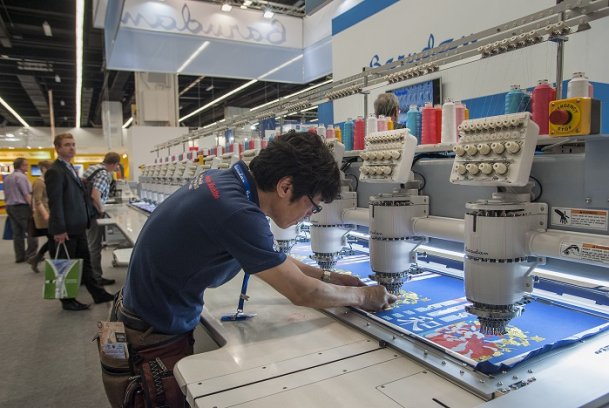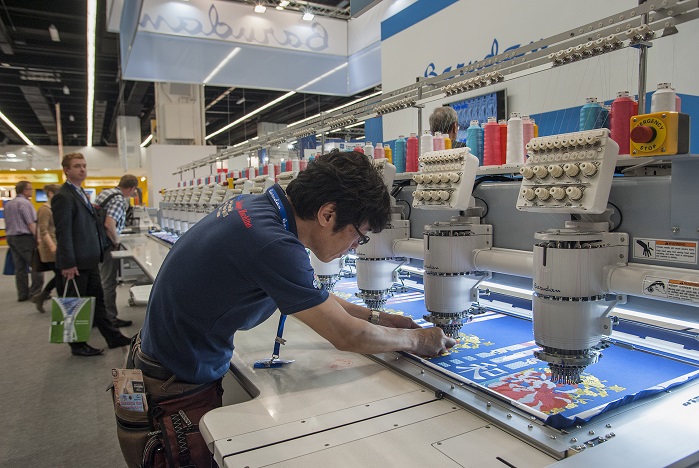
Texprocess Forum to discuss digitalisation and Industry 4.0
In the last twenty years, design sketching and pattern making have changed dramatically, as companies have been developing ways to speed up the production process.

24th March 2015
Knitting Industry
|
Frankfurt
The production of apparel has changed dramatically over the last few years. Nowadays, a variety of fashion collections, international production, 3D CAD, PLM and Cloud solutions have created completely new ways of computer-integrated garment manufacturing.
Texprocess, the leading trade fair for the processing of textile and flexible materials, organised by Messe Frankfurt, which takes place from 4-7 May in Frankfurt, will present these and other innovative software solutions for the apparel industry.
As the technology evolved, 3D CAD, commonly used in automobile, aeronautics and many other industries, has started to be used for the apparel industry and today, not only can we design a garment on a static avatar of our exact choice, we can even see how the design will look, fit and drape, in almost any fabric.

3D CAD certainly seems to be coming of age for the clothing industry, not surprisingly when one considers the enormous competitive benefits it can provide. “3D will be a disruptive technology. Its applications are broad and will have an impact from the creative and garment development process to merchandising and e-commerce,” commented Mike Elia, CEO of Gerber Technology.
The compression wear and swimwear industries have also learned how to make skin-tight pieces quickly by simply drafting shapes around a 3D model and reducing these into flat patterns, using the virtual avatar performing the virtual sport. Tukatech, exhibitor of Texprocess Americas, explained: “3D apparel design software eliminates the need for trial and error in physical sampling. By creating virtual prototypes before physical samples, designs can be modified more easily, significantly shortening the sample approval process.”
To enable a company to analyse its true requirements for appropriate and effective information systems, it needs to critically examine what is available in the IT field. This includes 3D virtualisation, product lifecycle management (PLM), workflow management systems, e-commerce, remote monitoring, machinery and equipment troubleshooting, an understanding of Industry 4.0, and more.

Industry 4.0 is a project in the high-tech strategy of the German government, which promotes the computerization of the manufacturing industry. The goal is the intelligent factory (Smart Factory), characterized by adaptability, resource efficiency and ergonomics. In the US, an initiative known as the Smart Manufacturing Leadership Coalition is also working on the future of manufacturing.
Two of the most interesting aspects that are tied to Industry 4.0 are Cloud Computing and Product Lifecycle Management. “In the upstream / inbound apparel supply chain, cloud-based vendor integration is one of the most interesting topics in the industry these days,” said Guido Brackelsberg, Managing Director, Setlog Apparel and Textile IT supplier. “PLM-systems go cloud; SCM-systems do so as well.”
Cloud Computing and Product Lifecycle Management systems are closely linked together. PLM is the process of managing the entire lifecycle of a product from inception, through design and manufacture, to service and disposal of manufactured products. It integrates people, data, processes and business systems, providing a product information backbone for companies and their extended enterprise.

“You create fewer samples, increase precision and uniformity of your product line’s fit, and drastically shorten its time-to-market; to name just a few of the benefits of introducing virtual sampling to your design process,” said Optitex, one of the suppliers of PLM.
“They aren’t just good for prototyping; these simulations are excellent tools you can use for marketing and selling your products. It drastically cuts the time you have to spend on each sample, the cost associated, as well as the hassle of scheduling and organizing numerous fit sessions. No more waiting for FedEx to deliver your next sample.”

Business intelligence for the fibre, textiles and apparel industries: technologies, innovations, markets, investments, trade policy, sourcing, strategy...
Find out more